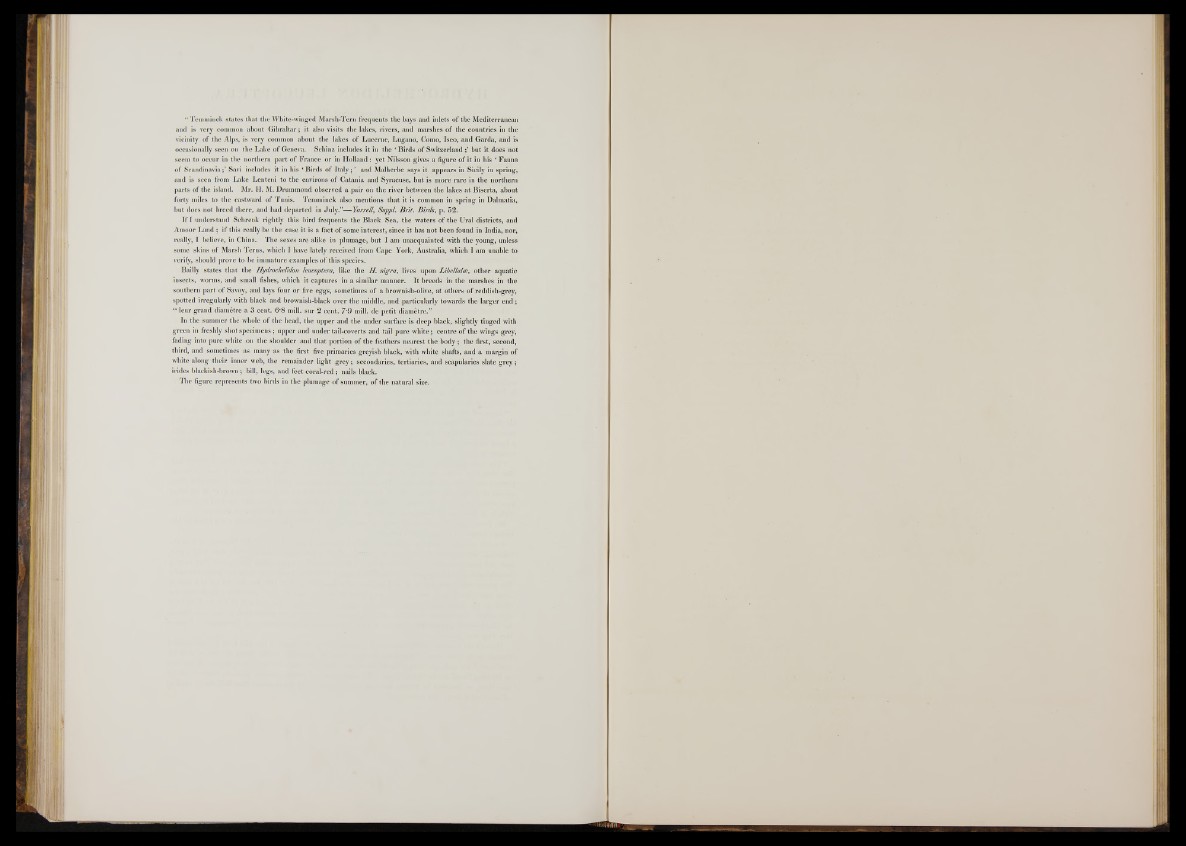
“ Temminck states that the White-winged Marsh-Tern frequents the bays and inlets o f the Mediterranean
and is very common about Gibraltar; it also visits the lakes, rivers, and marshes of the countries in the
vicinity of the Alps, is very common about the lakes of Lucerne, Lugano, Como, Iseo, and Garda, and is
occasionally seen on the Lake of Geneva. Schinz includes it in the ‘ Birds o f Switzerland ;’ but it does riot
seem to occur in the northern part of France or in Holland: yet Nilsson gives a figure o f it in his ‘ Fauna
of Scandinavia ;’ Savi includes it in his ‘ Birds of Italy ; ’ and Malherbe says it appears in Sicily in spring,
and is seen from Lake Lenteni to the environs o f Catania and Syracuse, but is more rare in the northern
parts of the island. Mr. H. M. Drummond observed a pair on the river between the lakes at Biserta, about
forty miles to the eastward of Tunis. Temminck also mentions that it is common in spring in Dalmatia,
but does not breed there, and had departed in July.”— Yarrell, Suppl. Brit. Birds, p. 52.
If I understand Schrenk rightly this bird frequents the Black Sea, the waters of the Ural districts, and
Amoor Land ; if this really be the case it is a fact o f some interest, since it has not been found in India, nor,
really, I believe, in China. The sexes are alike in plumage, but I am unacquainted with the young, unless
some skins o f Marsh Terns, which I have lately received from Cape York, Australia, which I am unable to
verify, should prove to be immature examples of this species.
Bailly states that the Hydrochelidon leucoptera, like the H. nigra, lives upon Libellulce, other aquatic
insects, worms, and small fishes, which it captures in a similar manner. It breeds in the marshes in the
southern part of Savoy, and lays four or five eggs, sometimes of a brownish-olive, at others o f reddish-grey,
spotted irregularly with black and brownish-black over the middle, and particularly towards the larger end ;
“ leur grand diamètre a 3 cent. 6 ’8 mill, sur 2 cent. 7'9 mill, de petit diamètre.”
In the summer the whole o f the head, the upper and the under surface is deep black, slightly tinged with
green in freshly shot specimens ; upper and under tail-coverts and tail pure white ; centre o f the wings grey,
fading into pure white on the shoulder and that portion o f the feathers nearest the body ; the first, second,
third, and sometimes as many as the first five primaries greyish black, with white shafts, and a margin o f
white along their inner web, the remainder light grey ; secondaries, tertiaries, and scapularies slate grey ;
irides blackish-brown ; bill, legs, and feet coral-red ; nails black.
The figure represents two birds in the plumage of summer, o f the natural size.